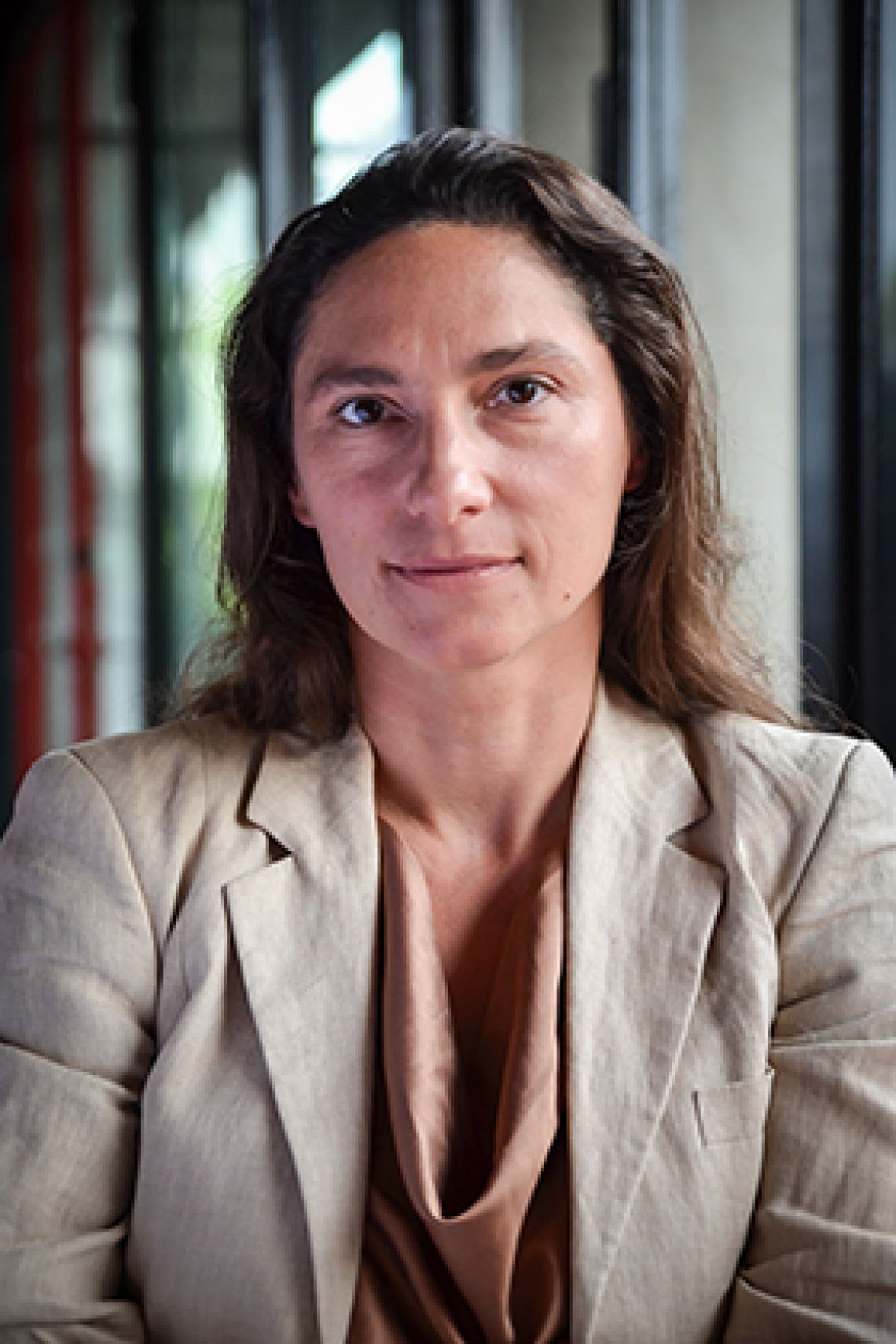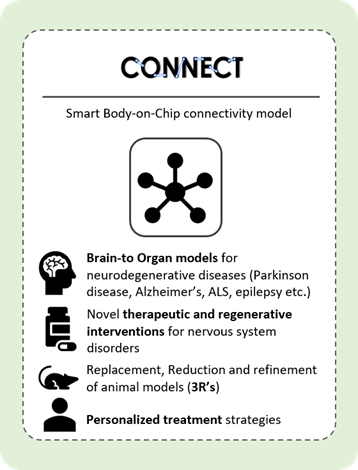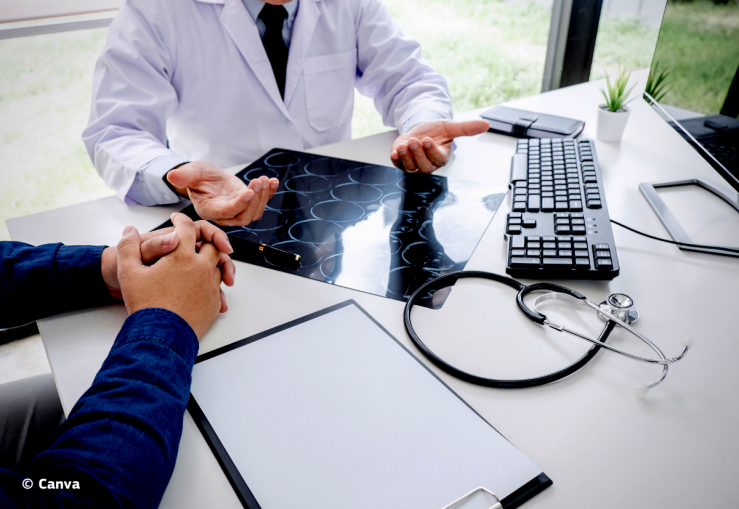Dr. Regina Luttge is an expert in medical and biological microsystems having bio-inspired functionalities. She coordinates CONNECT, a Future and Emerging Technologies (FET) project, which aims at providing better treatment for neurodegenerative disorders, such as Parkinson’s disease and Alzheimer’s disease.

Dr. Regina Luttge is an associate professor in the microsystems section and chair of neuro-nanoscale engineering at the Eindhoven University of Technology. Her core research interest is the design and control of micro- and nanofabrication methods for applications in biology and medical devices to tackle clinical questions on brain diseases and for neuropharmaceutical screening. She also authored and co-authored of more than 100 scientific publications in the fields of engineering, material science, biochemistry, molecular biology, astrophysics or pharmacology and toxicology. As the coordinator of the CONNECT project, she focuses on the integration of the principles of microfluidics, tissue engineering and electrophysiology into a Brain-on-Chip platform technology.
What is the objective of your project? What outcomes do you expect?
Our novel CONNECT chip technology will contribute to define more reliable pre-clinical Neurodegenerative Disease (NDD) models.
The primary aim is to make progress in modelling the mechanism of Parkinson’s Disease (PD). In this multidisciplinary domain of science, the implementation of an advanced human PD model, based on the marriage of chip and stem cell technology is envisaged. This project is the first steppingstone for our long-term vision in truly finding effective personalized treatment modalities for people suffering from PD and other shattering diseases being linked to the brain.

copyright: CONNECT
What are the current challenges for technologies inspired by/based on neural networks?
Disease mechanisms of declining brain functions are only rudimentary understood, because there is very little understanding of cell-cell interactive processes in the brain tissues. While there is already a portfolio of medical diagnostic techniques for identifying early onset of PD in clinical neurology, treatment methods do not exist. Building a neuronal network linking the enteric nervous system with the central nervous system in vitro can help to elucidate the disease mechanism and subsequently identifying new drug targets. To do so we need to emulate the microenvironment of the specific types of neurons being connected in these nervous tissues in a format that enables high-throughput screening of such cultured tissue interactions.
For my group Neuro-Nanoscale Engineering at Eindhoven University of Technology this means to build a system of entangled nano- and microliter volume-sized channels and containers that host, guide and support growth of axonal connections between the different types of cells in a systematic but in vivo-like manner. Subsequently, our project partners can use these systems for cell and tissue interactive studies to yield repetitive biological results with high statistical relevance and potentially lift our understanding of PD.
Are there any news concerning your research?
Having finalized just the first year of our project, we are still at the beginning of exploring the many design choices, however we are happy to announce that our first conceptual chip system has been realized and will be presented as the first CONNECT consortium contribution at the premier networking event of the European Organ-on-Chip Society, the Annual EUROoCS Conference 2020 in July.
Until now, how do you evaluate your participation in Horizon 2020 funding scheme? What is your own experience?
I evaluate my participation in Horizon 2020 funding scheme as a very valuable experience for extending my research goals beyond national boundaries. Brining together a range of expertise of leading specialists from different countries in this funding scheme is an important asset to generate the highest possible outcome for a project. In Horizon 2020, there are no local limitations to fund specific research. The need for funding different types of sciences within one and the same project (i.e. applying a multidisciplinary approach) is highly recognized and well supported by appropriate budgeting without the need for industrial lobbying.
This strategy can bring the complete CONNECT Nervous-system-on-Chip platform to fruition in a pre-competitive manner. While national funding schemes are often limited by budgets dedicated to a specific focus area of science that they fund in relative short-term defined projects, e.g. only the medical application, the technical development or advances in material science and engineering can be far better addressed by Horizon 2020 projects.
This project allowed me also to select from the best possible collaboration partner available among the pool of researchers in Europe being complementary to my own research. The budget and project runtimes of Horizon 2020 funding scheme are sufficiently high to support a long-term vision of the multidisciplinary sciences and puts emphasis on the entire development chain for innovation not only on academic outcome in form of publications: from fundamental principles of new materials to fabrication techniques as well as (bio)chemical method development in cell culture. While the latter points all have to come together in our project within a first proof of principle proposing a PD-on-chip model, each funded scientific discipline still receives an equal chance to invent and innovate.
What are your plans for the next months?
Since the outbreak of COVID-19 in the middle of March 2020, we were advised to stop all laboratory activity and work online from home. We have taken this time to submit or revisions of our manuscript on “Nanogrooves for 2D and 3D Microenvironments of SH-SY5Y Cultures in Brain-on-Chip Technology” to the journal Frontiers in Neuroscience, section Neural Technology. In this upcoming month, we will be able to revisit our Microfab laboratory again with restricted access. Despite these limited lab capacities, we will focus on completing the device fabrication for one of the system’s components, the so called microsieve. While keeping the previously published design and principle process of microfabrication unchanged using a combination of micromolding and excimer laser ablation, we will now vary the material’s properties of the microsieves. A change of material nearly always results also in a modification of the surface properties. Cells cultured on such surfaces interact with the substrate material and differentiation performance of stem cell-derived neurons in such formed 3D micropore features can also change. Hence, we will next investigate stem cell derived neuron differentiation and neural network communication by live Ca2+ imaging in such devices.
We aim to publish the detailed results of the fabrication and application of such an enabling microsieve chip platform at one of the upcoming conferences dedicated to micro- and nanofabrication but also present our project and current progress to a wider community at the upcoming SELECTBIO Organ-on-a-Chip, Tissue-on-a-Chip & Organoids Europe 2020 at Rotterdam (9-10 September) if Covid-19 regulation will allow such meetings to take place soon.
Background information
FET-Open and FET-Proactive are now part of the Enhanced European Innovation Council (EIC) Pilot (specifically the Pathfinder), the new home for deep-tech research and innovation in Horizon 2020, the EU funding programme for research and innovation.

DISCLAIMER: This information is provided in the interest of knowledge sharing and should not be interpreted as the official view of the European Commission, or any other organisation.

